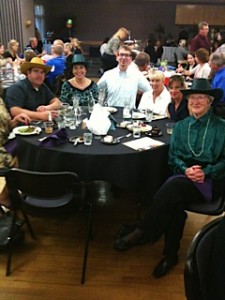A new violin teacher reached out to me recently on Tumblr (where he goes by TheVoraciousEar) to ask the following question:
Do you have any tips or exercises or resources that would be useful when it comes to teaching vibrato?
I’m devoting this blog post to answering this question by outlining how I teach students vibrato. Below is the response I gave on the subject.
First Step: how do you (as the teacher) do vibrato? There is an arm vibrato, wrist vibrato and finger vibrato. Most people do some combination of these methods. It helps to understand what you do and to be able to lay out the steps involved.
When I teach vibrato, I start with the student not holding the violin, but rather we both hold both our arms in front of the body with hands and wrists free and relaxed. Then we rhythmically flop the hands by an impetus from the fore arm, as we count 1,2,3,4, 1,2,3,4, etc. That is the assignment for the first week.
Second Step: the next assignment is to put the violin on the shoulder and place the hand roughly in third position with wrist against the violin box, second finger on A string. The finger must be relaxed and willing to change shape because now it rolls up and down the string as the hand moves back and forth along the neck of the violin, from the wrist, thumb and hand totally free and relaxed with no clenching. Second finger can try each string, hand and arm adjusting under the violin to reach the different strings comfortably. This is the assignment for the second week.
Third Step: Next assignment is to transfer this action to the other fingers. First finger needs to be free at the base which is against the violin most of the time. Taking the thumb off the violin neck can loosen the hand. Also, with thumb on violin neck, the student can practice “push away, touch“. That is, the hand and thumb open up as the base of the first finger pushes away from the violin neck and then touches again. The hand needs to be able to move along the violin neck freely, back and forth.The other fingers learn from the second and first fingers. Fourth finger is often weak and can cave in. Sometimes I let the student use third finger along with fourth in the beginning to get the motion going. The student is still working in third position with third position notes. All this can take several weeks.
Fourth Step: Next assignment is to transfer this action to first position. With the hand in third position and the hand against the violin box, the wrist remains still and the hand moves back and forth which is what we want. Sometimes when the student moves to first position, suddenly the hand remains still and the wrist pumps back and forth. In this action the finger does not roll, so no vibrato and the emphasis now is to achieve the same action in first position as in third position.
Fifth Step: Next assignment, likely some time later, learn to let a slight impetus come from the fore arm, to move the hand back and forth at the wrist with more speed and energy.
Well, there is a quick outline of how I teach vibrato. It can be done!
Cheers, courage and good luck!
For more info and Exercises and Practices, see “Basics” by Simon Fischer, Edition Peters. Part G – Vibrato pages 213 to 226




